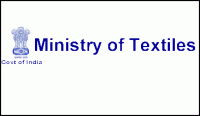
The year 2016 witnessed the Ministry of Textiles taking several initiatives for the development of the textiles sector, with a focus on boosting employment generation, investment, production and export promotion. A sector-wise overview of the various measures and achievements is given below.
1) Special Package for Job Creation & Export Promotion in Apparel Sector
The Ministry of Textiles rolled out a special package of measures to support the apparel sector and enable it to improve its global competitiveness. Jobs for 1 crore people, mostly women; US$ 30 bn. in exports; and investment worth Rs. 74,000 crores – all in three years; these are the expected outcomes of the special package, approved by the Union Cabinet, on June 22, 2016.
The package is a strategic decision that would strengthen and empower the Indian textile and apparel sector by improving its cost competitiveness in the global market. The measures assume significance due also to its potential for social transformation through women empowerment; since 70% of the workforce in the garment industry are women, majority of the new jobs created are likely to go to women.
The special package includes a slew of labour-friendly measures that would promote employment generation, economies of scale and boost exports.
The salient features of the package are:
- Employee Provident Fund Scheme Reforms: Govt. of India will bear the entire employer’s contribution of 12% under the Employers Provident Fund Scheme, for new employees of garment industry earning less than Rs. 15,000 per month, for the first three years. Further, EPF will be made optional for employees earning less than Rs. 15,000 per month.
- Increasing overtime caps: Overtime hours for workers not to exceed 8 hours per week in line with ILO norms.
- Introduction of fixed term employment: Considering the seasonal nature of the industry, fixed term employment will be introduced for the garment sector.
- Additional incentives under ATUFS: The subsidy provided to garmenting units, under Amended-TUFS, is being increased from 15% to 25%, providing a boost to employment generation.
- Enhanced duty drawback coverage: In a first-of-its-kind move, a new scheme will be introduced to refund the state levies which were not refunded so far. Drawback at All Industries Rate will be given for domestic duty paid inputs even when fabrics are imported under Advance Authorization Scheme.
- Enhancing scope of Section 80JJAA of Income Tax Act: Looking at the seasonal nature of garment industry, the provision of 240 days under Section 80JJAA of Income Tax Act would be relaxed to 150 days for garment industry.
A summary of the expected impact of the package is given below, in quantitative terms:
2) Special Package for Job Creation & Export Promotion in Made-ups Sector
Given the standing and potential of the made-ups sector, the Union Cabinet approved a special package for the sector, on December 7, 2016. A set of time-bound interventions has been approved, within the approved budget of Rs. 6,006 crore for the apparel package, in order to create large scale direct and indirect employment of up to 11 lakh jobs over the next three years in the made-ups sector.
- Providing production incentive through enhanced Technology Upgradation Fund Scheme (TUFS) subsidy of additional 10% for Made-ups, similar to what is provided to garments, based on additional production and employment after a period of 3 years.
- Extension of Pradhan Mantri Paridhan Rozgar Protsahan Yojana (PMPRPY) Scheme (for apparel) to made-ups sector for providing additional 3.67% share of Employer’s contribution in addition to 8.33% already covered under Pradhan Mantri Rozgar Protsahan Yojana (PMRPY), for all new employees enrolling in EPFO for the first three years of their employment, as a special incentive to Made-ups sector.
- Extension of Rebate of State Levies (ROSL) (for apparel) Scheme to made-ups sector for enhanced Duty Drawback on exports of Made-ups.
- Simplification of labour laws: Increasing permissible overtime up to 100 hours per quarter in Made-ups manufacturing sector, and making employees’ contribution to EPF optional for employees earning less than Rs. 15,000 per month.
The package is expected to boost employment in the textile sector and create employment for up to eleven lakh persons, lead to a cumulative increase of US$ 2.8 billion in exports, attract investment of approximately Rs. 6000 crores and enhance benefits to the workers in the textile and apparel sector.
3) Amended Technology Upgradation Fund Scheme
Following the Cabinet’s approval on December 30, 2015, the Ministry introduced Amended Technology Upgradation Fund Scheme (ATUFS) on January 13, 2016. Coming in place of Revised Restructured Technology Upgradation Fund Scheme (RR-TUFS), ATUFS aims to facilitate technology upgradation of the textiles industry. The amended scheme guidelines were notified on February 29, 2016.
The new scheme specifically targets:
- Employment generation and export by encouraging apparel and garment industry, which will provide employment to women in particular and increase India’s share in global exports
- Promotion of Technical Textiles, a sunrise sector, for export and employment
- Promoting conversion of existing looms to better technology looms for improvement in quality and productivity
- Encouraging better quality in processing industry and checking need for import of fabrics by the garment sector
The amended scheme would give a boost to “Make in India” in the textiles sector; it is expected to attract investment to the tune of one lakh crore rupees, and create over 30 lakh jobs. A budget provision of Rs. 17,822 crores has been approved, of which Rs. 12,671 crores is for committed liabilities under the old scheme, and Rs. 5,151 crores is for new cases under ATUFS. All cases pending with the Office of Textile Commissioner which are complete in all respects, shall be provided assistance under the old scheme and the new scheme will be given prospective effect.
The new scheme provides for two broad categories:
- Apparel, Garment and Technical Textiles, where 15 percent subsidy would be provided on capital investment, subject to a ceiling of 30 crore rupees for entrepreneurs over a period of five years.
- Remaining sub-sectors would be eligible for subsidy at a rate of 10 percent, subject to a ceiling of Rs.20 crores on similar lines.
4) Integrated Skill Development Scheme
To mark the occasion of Good Governance Day, on 25th December, 2014, the ISDS has been scaled up during the 12th Plan with an allocation of Rs. 1,900 crores to train 15 lakh persons. ISDS seeks to address the critical gap of skilled manpower in textile industry through industry-oriented training programmes; it is implemented through three components by 86 Implementing Agencies.
To meet the needs of the industry for a skilled workforce and thereby support its competitiveness, the scheme has so far imparted training to a total of 8.49 lakh people, out of which 7.50 lakh have been assessed and 5.79 lakh placed. The scheme has largely aligned been with the common norms of Ministry of Skill Development & Entrepreneurship. The skilling targets for the coming years are given here.
A review of the web-based Management Information System of the scheme was undertaken by the Union Minister in November. In order to strengthen the monitoring mechanism, the Minister asked for the development of a physical verification module, with a feature to upload videos of visits in stipulated time. In order to ensure that the benefits reach maximum number of people, Smt. Irani sought for the display of scheme details in public domain. She also stressed on the need for increasing participation of SMEs & sensitising textiles councils for taking up initiatives under ISDS.
5) North East Region Textile Promotion Scheme: NERTPS
A landmark initiative under NERTPS for construction of Apparel and Garment manufacturing Centres in all NE States was launched in 2014, with the announcement by the Prime Minister on 1st December 2014 in Nagaland. The objective of the scheme is to promote employment in the NE States and encourage entrepreneurship especially amongst women, in the area of garmenting which has a huge potential both within the country and abroad.
Accordingly, centres in all eight states have been completed and are in the process of commencing operations. The centres in Nagaland, Tripura, Mizoram, Arunachal Pradesh and Manipur have already been inaugurated.
Each Apparel and Garment Making Centre set up under the initiative is estimated to generate direct employment for 1,200 people. Each state will have one centre with three units, each having 100 machines. For local entrepreneurs with requisite background, required facilities to start a unit will be provided in ‘plug and play’ mode. Once such entrepreneurs get established, they can set up their own units, allowing the facility to be provided to new entrepreneurs. The project is being fully funded by the Ministry, with an estimated expense of Rs. 18.18 crores for each state.
NERTPS is an umbrella scheme for the development of various segments of textiles, i.e. silk, handlooms, handicrafts and apparels & garments. The scheme has a total outlay of Rs. 1038.10 crore in the 12th Five Year Plan. A total of 45 projects have been sanctioned under the scheme, with a Government of India assistance of Rs. 1043.10 crore.
6) Scheme for Integrated Textile Parks (SITP)
SITP addresses the need for infrastructure on cluster basis, and helps the industry meet international environmental standards and establish integrated value-chains under PPP for lowering costs. Under SITP, 66 textile parks have been sanctioned which are at different stages of implementation. This has resulted in employment for 79,000 people and additional investment of Rs. 9,500 crores. Evaluation studies have shown that the industry benefits from the creation of cluster-based infrastructure.
7)Integrated Processing Development Scheme (IPDS)
The Ministry of Textiles is implementing IPDS to enable the textile processing sector in meeting environmental standards through appropriate technologies such as marine, riverine and Zero Liquid Discharge (ZLD). The Government of India provides financial assistance up to 50 % of project cost for Common Effluent Treatment Plants (CETPs), subject to a ceiling of Rs. 75.00 Crore. The Ministry has approved four projects in Rajasthan and two projects in Tamil Nadu, providing relief to about 2000 SME units.
8) Handloom Sector
Celebration of Second National Handloom Day
The second National Handloom Day – 7th August, 2016 – was celebrated across the nation by the Ministry of Textiles. The Union Textiles Minister Smt. Smriti Zubin Irani inaugurated the main event in Banaras Hindu University, Varanasi. The Sant Kabir Awards 2015, the National Handloom Awards 2015, prizes for winners of India Handloom Brand Design Contest and ‘Design Sutra’ contest of NIFT were given away by the Union Minister, on the occasion.
The Minister spoke of the need for a weavers’ census so that they can directly connect with the Government and avail benefits of schemes. She also announced the setting up of a helpline for resolving professional queries of handloom weavers.
The Ministry of Textiles signed MoUs with the Ministry of Skill Development and Entrepreneurship for skill upgradation of handloom weavers through Weavers Service Centres (WSCs). An MoU was signed with National Institute of Open Schooling (NIOS) and Indira Gandhi National Open University (IGNOU) for providing educational opportunities to handloom weavers and their children. Another MoU was signed with NIFT for implementing revamped curricula to incorporate handlooms and handicrafts and engage leading fashion designers to work with handloom clusters. MoUs were signed also with Fashion Design Council of India and other reputed designer groups to provide services of reputed designers as mentors to WSCs. Leading fashion designers including Rajesh Pratap Singh, Anita Dongre, Samant Chauhan, Sanjay Garg, Shruti Sancheti, Rina Dhaka and Tarun Tahiliani joined hands with the Ministry of textiles in promoting hand-woven clothes. The fashion range in India Handloom Brand was also launched on the occasion. A number of leading garment manufacturers agreed to adopt the India Handloom Brand fabric as well. The occasion also witnessed handloom weavers being presented MUDRA loans from the Union Minister. The Minister also dedicated new buildings for six Common Facility Centres to the nation on the same day.
To spread the word about the occasion and popularize the use of handlooms, the Ministry of Textiles ran a social media campaign with the hashtag #IWearHandloom. The campaign, which was launched by the Textiles Minister with posts by her on Twitter and Facebook, elicited a very good response.
5 Lakh handloom weavers to get MUDRA loans in three years
This target was announced by Union Textiles Secretary, Smt. Rashmi Verma, at a national workshop on MUDRA scheme for handloom weavers and artisans, organized by Office of Development Commissioner (Handlooms), Ministry of Textiles at New Delhi on June 29, 2016. Smt. Verma informed that the Government has formulated a new model under MUDRA scheme for providing credit to handloom sector. The new model combines elements of concessional credit such as margin money, interest subvention and credit guarantee cover. The Ministry of Textiles has requested every state and UT to prepare a three-year action plan to achieve the five lakh target.
Block Level Handloom Clusters
During this year, the Government has significantly expanded its support to handloom clusters, in terms of Common Facility Centres (CFCs), skill upgradation, assistance for loom upgradation and effective project management by engaging the services of full time Cluster Development Executives and competent designers. A total of 254 clusters have been sanctioned so far in 23 states.
Hathkargha Samvardan Sahayata (HSS)
- On the occasion of 2nd National Handloom Day celebrated in Varanasi on 7th August 2016, Hon’ble Minister of Textiles announced “Hathkargha Samvardhan Sahayata” to meet the needs of the handloom weavers for assistance for looms and accessories on larger scale with an objective to improve quality of fabric and productivity.
- HSS aims to improve earnings of the handlooms weavers.
- For implementation of HSS, Weavers’ Service Centre concerned will play a lead role, including in selection of weavers, arranging camps of empaneled suppliers etc.
- Assistance for looms/jacquards/dobbies etc. will be provided to maximum possible number of weavers who have undergone training in weaving in last 2 years, including in Block level cluster projects. Benchmark cost of handloom (upto 60” is Rs. 25,000/- and above 60” is Rs. 40,000/-), motorised Warping Machine – Rs. 45,000/-, Jacquard Rs. 15,000/- etc.
- In 254 block level clusters for which funds have been released, 36,495 weavers will be benefitted from looms/accessories etc. across the country.
- For availing looms/accessories by the weavers, he/she will be required to pay only 10% of the unit cost to the empaneled supplier in the Camp. 90% of the unit cost will be borne by the Government and will be transferred in the Bank account of weavers through designated Agency i.e. National Handloom Development Corporation (NHDC).
- Looms procured by the weavers under HSS should either be installed in their cottage or common workshed of Co-operative Society/SHG/Govt. for carrying out weaving.
- In Varanasi, selection of beneficiaries and empanelment of suppliers completed. On 22nd Dec. 2016, during the camp, weavers will place supply order to the supplier for supply of 501 loos/accessories (151 frame looms, 231 jacquards and 119 motorised jacquards) and pay their 10% financial contribution electronically.
Rashtriya Swasthya Bima Yojana (RSBY)
The Government has decided to provide life insurance and health insurance benefits to handloom weavers through national social security schemes. Handloom weavers have been given coverage under RSBY from April 1, 2016. The available assistance has been increased to Rs. 30,000/, as against Rs. 15,000/- earlier. The Government is also in the process of providing coverage to handloom weavers in Pradhan Mantri Jeevan Jyoti Yojana; it will provide an insurance cover of Rs. 2.00 lakh in case of death due to any reason, as against the present life cover of Rs. 60,000/- in natural death and Rs. 1.50 lakh in case of accidental death. Further, Ministry of Finance, Government of India is coordinating with concerned Ministries to converge all Insurance Schemes including Mahatma Gandhi Bunkar Bima Yojana (MGBBY) to Pradhan Mantri Jeevan Jyoti Bima Yojana (PMJJBY) and Pradhan Mantri Suraksha Bima Yojana (PMSBY) from the next financial year and planning to cover all handloom weavers under the insurance coverage.
India Handloom Brand gets showcased in Italy
Five registered holders of ‘India Handloom’ Brand showcased their products for the first time abroad in the Italy market, at the India Textile Handloom Exhibition, inaugurated on July 7, 2016 at Anzio, Italy, jointly by Union Textiles Secretary, Ambassador of India to Italy and Mayor of Anzio, Italy. Six handloom exporters and five handicraft artisans too displayed their products.
First Meeting of All India Handloom Board held
The first meeting of the All India Handloom Board was held in New Delhi, on 19thApril, 2016, under the Chairmanship of the then Union Textiles Minister Shri Santosh Kumar Gangwar. The Minister conveyed to the Board members that the Government under the leadership of Hon’ble Prime Minister Shri Narendra Modi is implementing a newly chalked out strategy for revival and resurgence of the handloom industry. Shri Gangwar said that the new strategy for revival of the handloom industry has the core objective of increasing the earnings of handloom weavers through skill upgradation, loom upgradation, availability of good quality raw material at cheaper rates, availability of adequate credit facilities, product design and development and branding for effective marketing.
He said that the most important initiative in this regard has been the launch of ‘India Handloom’ Brand, aimed at regaining consumer confidence, through quality endorsement in terms of authenticity, azo-free dyes, and fast colours. He added that Information Technology is being harnessed in a significant way, for bringing transparency and ease to beneficiaries in accessing facilities. The Minister said that under the Enterprise Resource Planning (ERP) project of National Handloom Development Corporation Ltd., weavers will be able to place indents online, track status of their indents, view the stock of materials in yarn depots, get information about unused quota in yarn subsidy scheme and get important information on dispatch of material through SMS in their local language.
During the meeting, the Textiles Minister launched a web portal for continuous upgradation of details of handloom weavers, which will enable effective and easy implementation of various schemes. He said that a dedicated website has already been launched, where applications for ‘India Handloom’ Brand registration can be submitted. The Minister announced that a portal-based application for allotment of stalls in sale exhibitions will also be launched soon; this will enable handloom weavers to register their application online, doing away with the need to go to Weavers Service Centres for the same. He said that the allotment of stalls will be done through the software and will be displayed on the portal for full transparency.
BUNKAR MITRA — HANDLOOM HELPLINE CENTRE
Currently 28 Weavers’ Service Centres (WSCs) are functioning across the country to provide technical assistance to handloom weavers in improving their skills. For seeking assistance, weavers have to personally visit the WSCs. As on date, there is no single point of contact where weavers can seek solutions for their technical issues/problems.
In order to enable poor weavers to overcome these problems, the Central Government has decided to establish a “Bunkar Mitra-Handloom Helpline Centre” where professional queries of weavers will be answered by the experts in the field. This helpline will function from 10.00 a.m to 6 p.m. and initially it will be provided in 6 languages viz., Hindi, English and 4 other regional languages (Telugu, Tamil, Bengali & Assamese).
To set up this helpline, online bids were called by following the due e-procurement process. M/s. MSD (I) P. Ltd., Bhopal has been selected as an agency for providing Handloom Helpline Centre and LOI was issued on 30.11.2016. A period of 30 days has been given for making entire installation and set-up of call centre and to make it operative.
India Handloom Brand joins hands with BIBA and Peter England
Following the announcements made on 2nd National Handloom Day, the Ministry of Textiles has joined hands with leading brands BIBA and Peter England. The Ministry has launched India Handloom Brand garments at BIBA’s flagship store at Lajpat Nagar, New Delhi on November 7, 2016. Under the collaboration, India’s leading pan-India ethnic brand BIBA would create apparels using the India Handloom Brand fabrics promoted by the Ministry of Textiles. On November 28, India’s leading menswear brand Peter England too rolled out an exclusive India Handloom brand collection, which was launched by the Textiles Minister. The brand procured India Handloom fabric from Mangalgiri cluster of Andhra Pradesh, benefitting weavers directly. The company intends to procure 1 lakh metres of fabric in the next FY, to roll out the collection at all 75 stores across India.
9) Handicrafts Sector
The Government of India has revised handicrafts schemes and formulated a new strategy, which has four broad components:
- Infrastructure development, such as a Common Facility Centre in every cluster
- Development of design and training, through schemes under Office of DC (Handicrafts)
- Direct assistance to artisans, such as online assistance through their bank accounts
- Linking up with market with participation of private sector
A major initiative taken by the Ministry of Textiles during the year, for promotion and development of handicrafts sector, is the launch of ‘Pehchan’ – an initiative to register & provide ID cards to handicraft artisans for better access to benefits. The nation-wide campaign to provide identity cards to handicrafts artisans from all over the country was launched by the Union Textiles Minister Smt. Smriti Zubin Irani, at a Pehchan registration camp organized at Sant Kabir Nagar, on 7th October, 2016. In order to ensure one-stop assistance for artisans, desks were also set up for registration of Jan-Dhan Yojana, Aadhar Card and LIC Insurance. The linkage with Aadhaar would help avoid duplication of benefits.
Similar camps were held at 50 locations across the country. MoS, Shri Ajay Tamta joined the launch of ‘Pehchan’ registration camp at Dehradun in Uttarakhand. A total of 4,30,441 Pehchan registration forms were collected, as on 8th December, 2016.
The President of India, Shri Pranab Mukherjee presented Shilp Guru awards and National Awards to master craftspersons at a function at Rashtrapati Bhavan Cultural Centre, New Delhi, on 9th December, 2016. 9 Shilp Gurus and 19 National Awardees received the awards for the year 2015. The main objective of the awards is to give recognition to masters for their excellence in craftsmanship and valuable contribution to Indian Handicrafts.



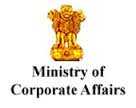
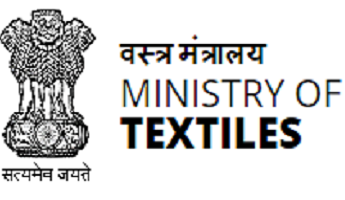
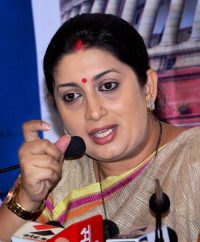
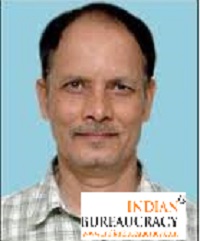
Leave a Reply
You must be logged in to post a comment.